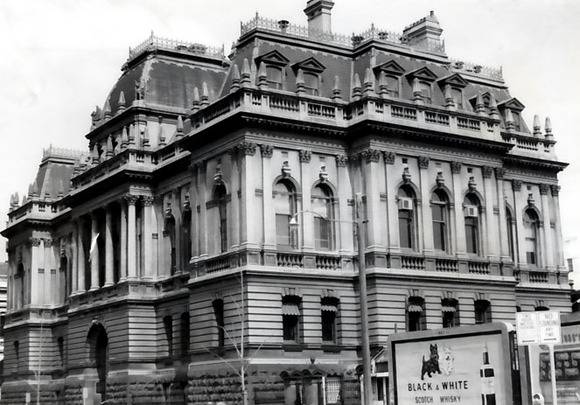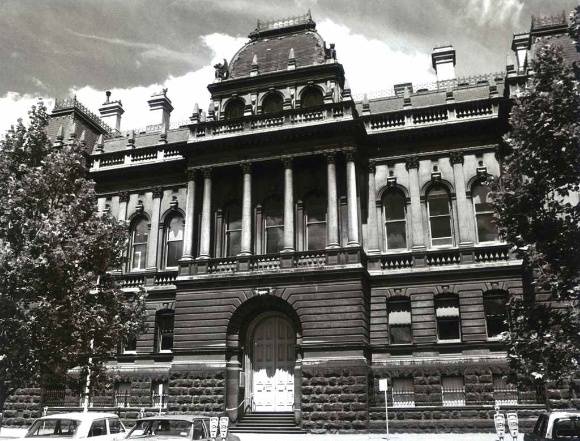| Back to search results » | Back to search page » |
|
Records Office (Former)
Location287-295 Queen Street, MELBOURNE VIC 3000 - Property No B2936
File NumberB2936LevelState |
|
Statement of Significance
What is significant?
The former Records Office was built in 1900 - 1904 to the design of S E Bindley, District Architect of the Public Works Department. The contractor was Bartley Dinsmore. It was originally built to house official records including records of births, deaths and marriages, as well as legal records and wills. The building is in the French Second Empire style, a style considered appropriate for a city striving for Parisian grandeur. The main building has a rusticated basement and first floor, a piano nobile with Corinthian columns and pilasters, and an attic storey hidden behind the balustraded parapet. The distinctive Mansard roof is capped with cast iron finials and elaborate zinc griffins. Typical of the style, the main facade has projecting centre and end bays. Internally the main at the Queen Street entrance rises on granite columns through three floors and has marble balustrades to the first floor and cast iron balustrades to the piano nobile. The former Records Office is constructed of stuccoed brick and is joined to a single-storey strong room building at the rear of the courtyard. A caretaker's flat was built over the strong room building in 1938. Fireproof floor construction is used throughout the building with iron roller shutters on the ground floor and in the strong room.
How is it significant?
The former Records Office is of architectural, historical and scientific (technical) significance to the State of Victoria.
Why is it significant?
The former Records Office is architecturally significant as a last grand statement in the French Second Empire style of a city aspiring to the grandeur of European cities. The Records Office reflects an important development in the design philosophy of Public Works Department architects.
The former Records Office is historically significant for demonstrating the importance of record-keeping in carrying out the functions of Government. Its location near the Titles Office and the Law Courts illustrates the early relationship between all these arms of Government. The responsibilities of the first Registrar-General of the colony of Victoria included registering land grants and collecting statistics of birth, deaths and marriages. From 1858 the position also became the Registrar of the Supreme Court responsible for the safekeeping of legal documents relating to land transactions and court records. The Records Office originally housed records relating to all of these functions of Government.
The former Records Office is scientifically (technically) significant for its use of fire precaution methods. The Traegerwellblech system of fireproof floor construction used throughout the building represents an advance in fireproof flooring techniques first tested in Melbourne in 1881. The system used deep corrugated iron designed to carry substantial loading and was curved into flat arches spanning between the girders.
Classified: 22/07/1971
Group
Government and Administration
Category
Office building





